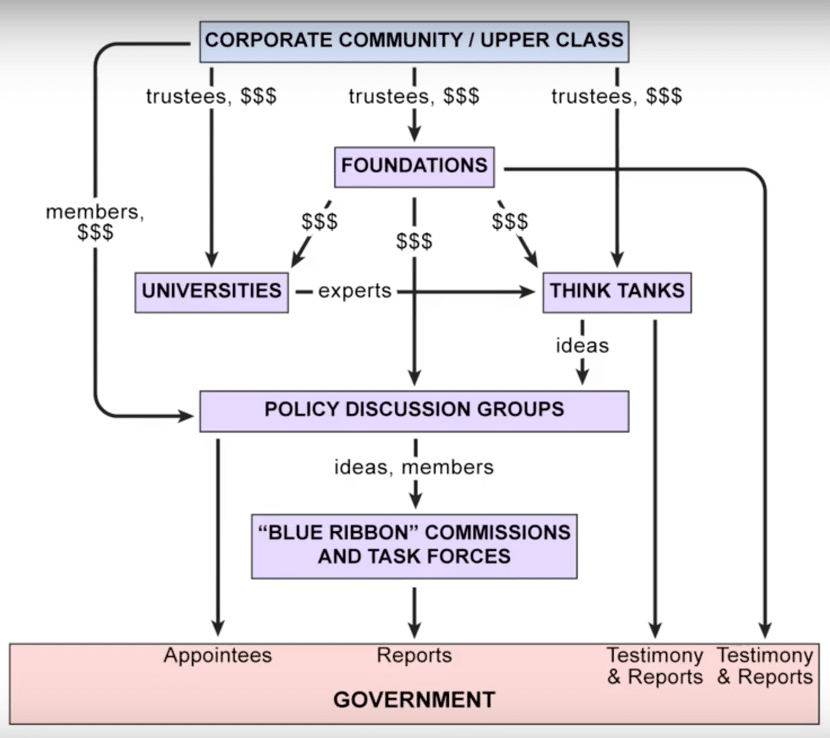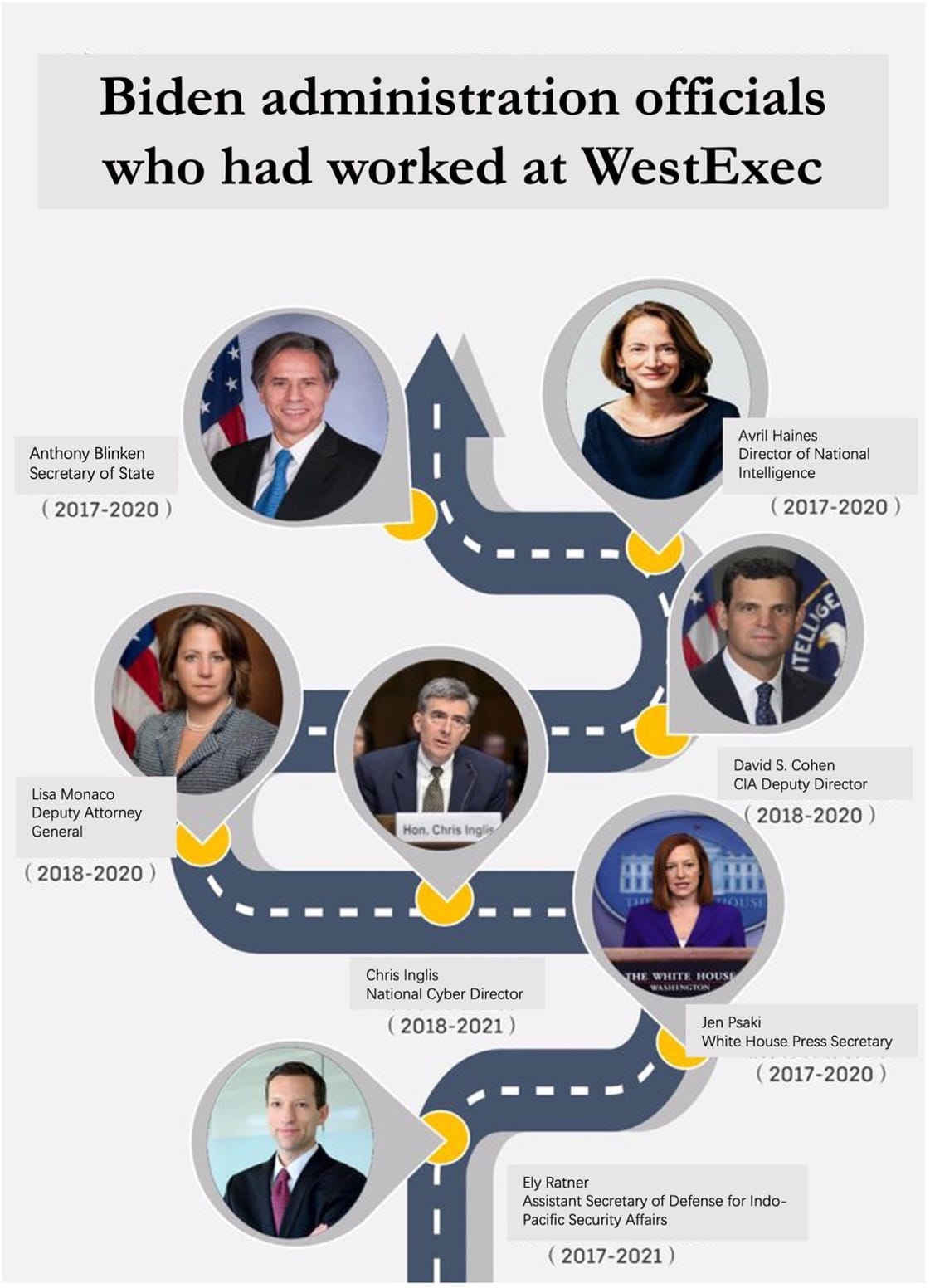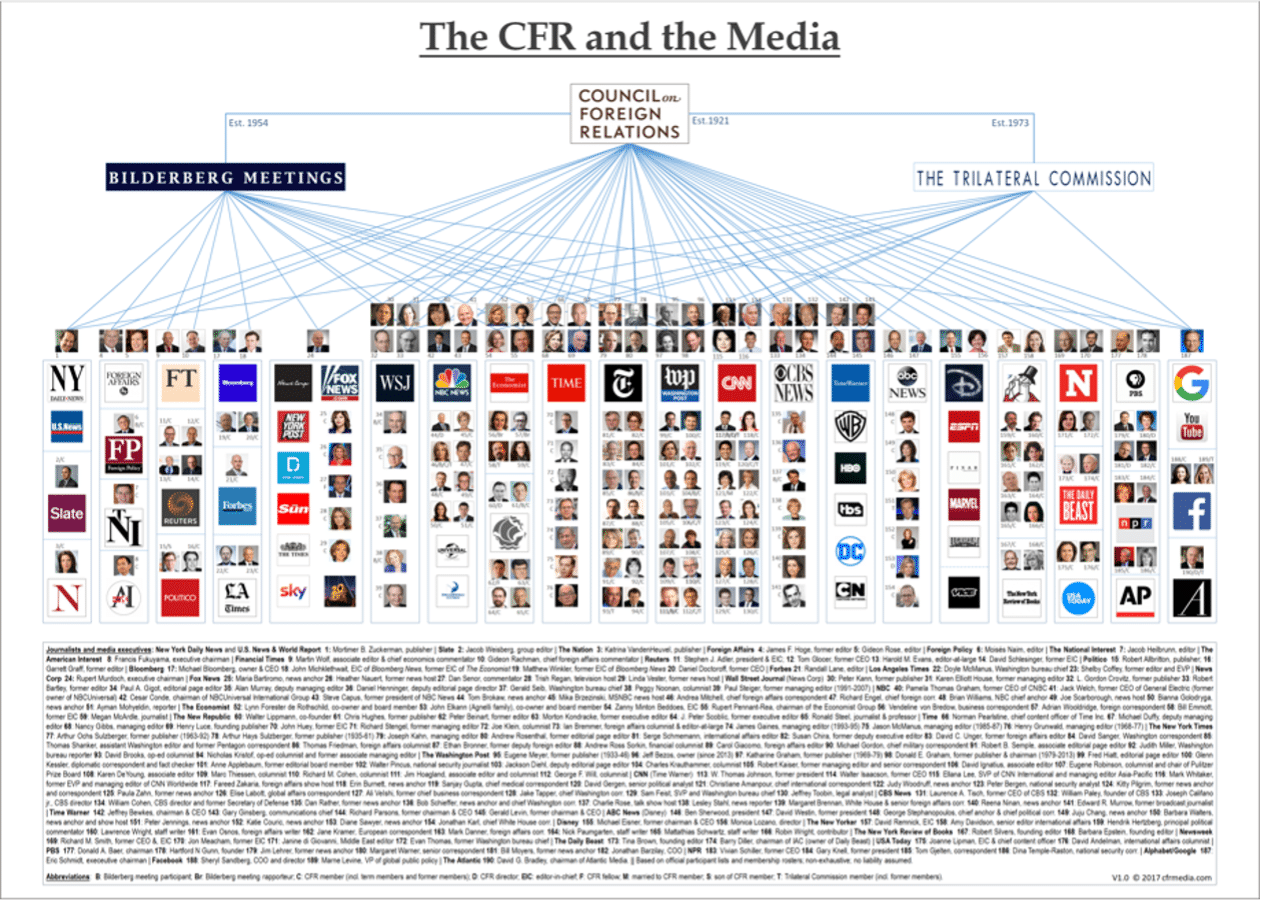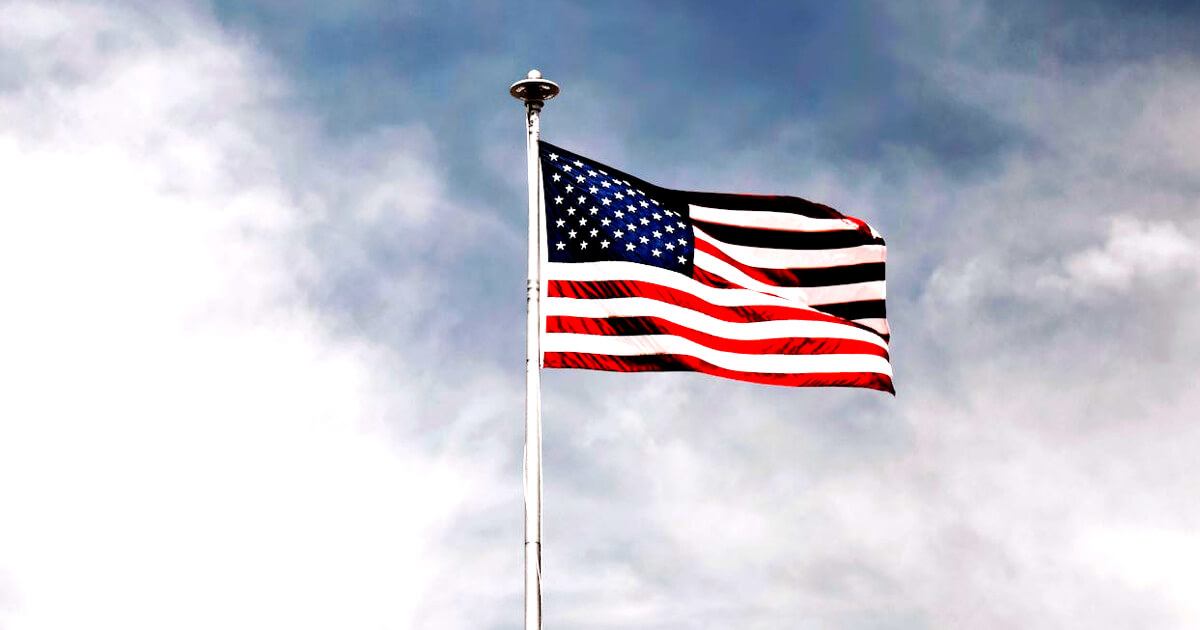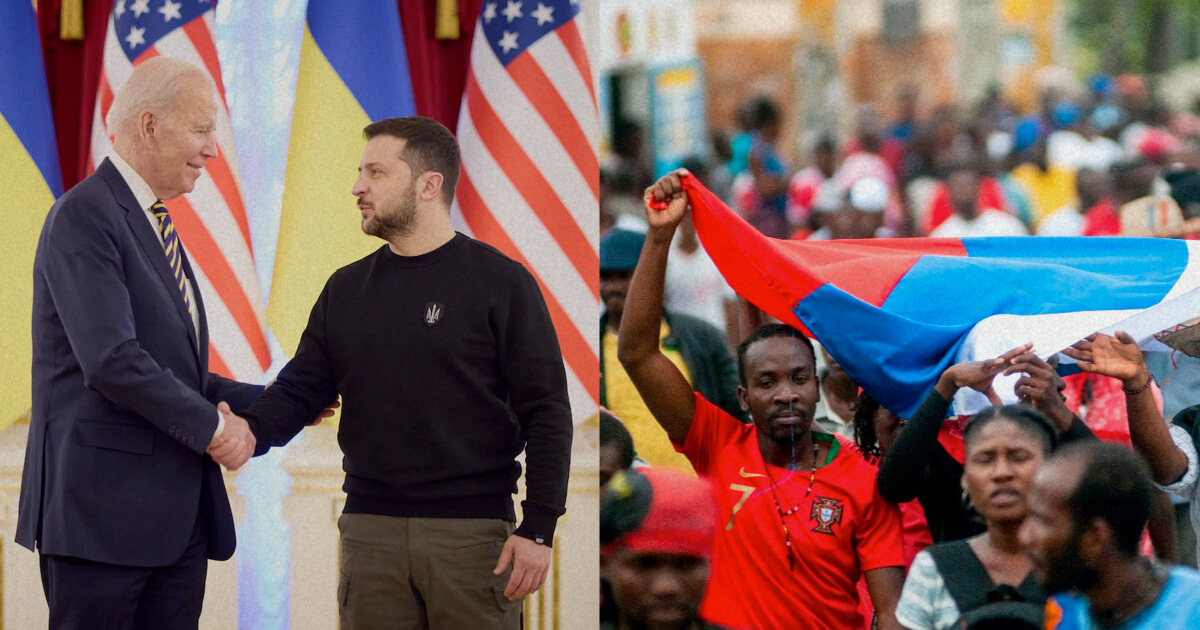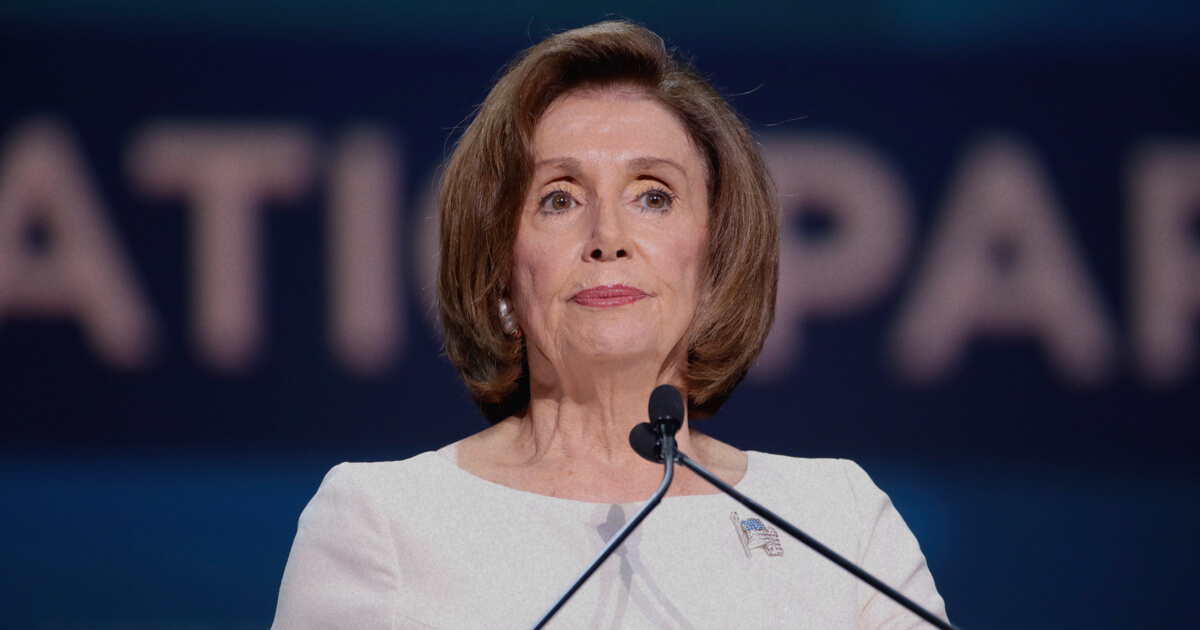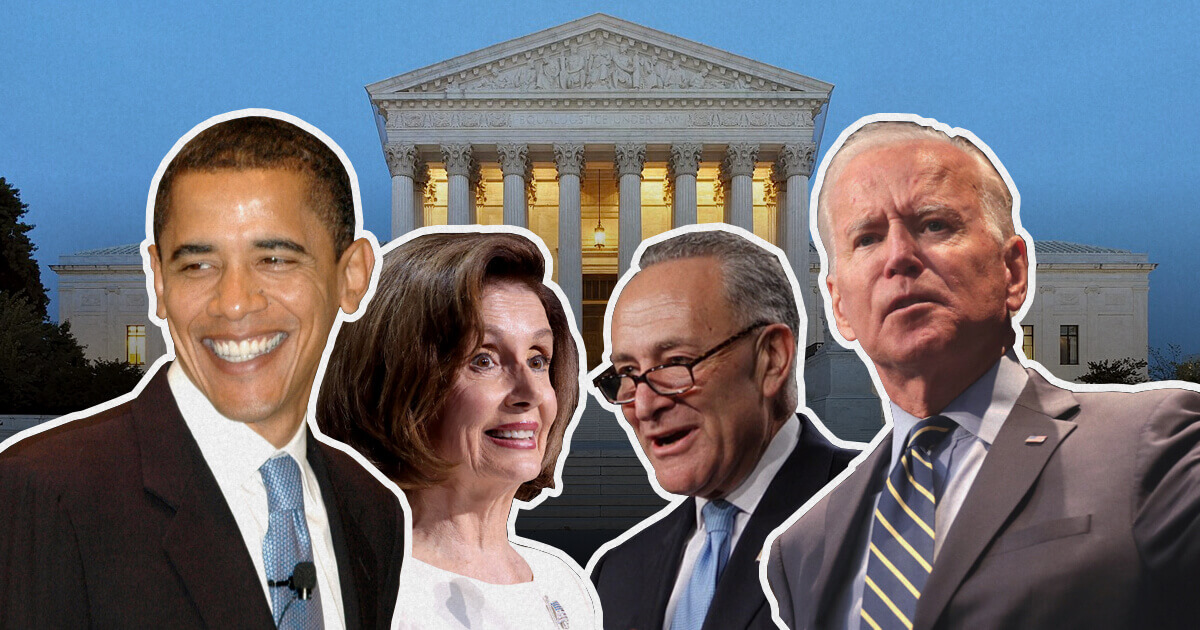The world is sensing the United States’s growing rapacious intent for war. Amid the development of the Ukraine crisis, the United States and NATO have been attempting to escalate their proxy war with Russia while continuing to intensify their siege and provocations against China.
If there was any doubt regarding Washington’s intent to go to war with Beijing, the May 15th segment on simulated “War Games” by the weekly NBC Show Meet the Press should dispel any such notions. It should be noted that the Center for a New American Security (CNAS), who organized these “games”, is funded by an array of U.S. military and technology companies, including Facebook, Google, and Microsoft, the Taipei Economic and Cultural Representative Office, and George Soros’ Open Society. This simulation is clearly in line with the other signals toward war from both Congress and the Pentagon. On 14 April, a bipartisan delegation of US lawmakers visited Taiwan. On 4 May, Charles Richard, commander of US Strategic Command, made a strong case in Congress for the “nuclear threats” posed by Russia and China to the United States, claiming that China is likely to use nuclear coercion for its own benefit. On 5 May, South Korea announced that it had joined a cyber defense organization under NATO while at the same time South Korea and Japan were invited to attend the NATO summit in Madrid, which suggests the possibility of a NATO Asian branch.
In the face of the Biden administration’s aggressiveness and belligerence in foreign affairs, one can’t help but wonder: among the U.S. ruling elite, who is advocating war? Is there still a mechanism to curb such belligerence in the country?
This article comes to three conclusions: first, in the Biden administration, two foreign policy elite groups that used to compete against each other, liberal hawks and neoconservatives, have merged strategically, forming the most important foreign policy consensus within the elite echelon since 1948 and bringing the country’s war policy to a new level; second, in consideration of long-term interests, the big bourgeoisie in the United States has reached a consensus that China is a strategic rival, and has established solid support for its foreign policy; and third, due to the design of the U.S. Constitution, the expansion of the far-right forces, and the sheer monetization of elections, the so-called democratic institutions of checks and balances are completely incapable of restraining the belligerent policy from spreading.
The Merging of Belligerent Foreign Policy Elites
Early representatives of U.S. liberal hawks included Democratic presidents such as Harry Truman, John F. Kennedy, and Lyndon Johnson, whose ideological roots – liberal interventionism – can be traced back to Woodrow Wilson’s idea that America should stand on the world stage fighting for democracy. The invasion of Vietnam was guided by this ideology.
After the defeat in Vietnam, the Democratic Party temporarily reduced calls for intervention as part of its foreign policy. Democratic Senator Henry “Scoop” Jackson (also known at the time as the “Senator from Boeing”), a liberal hawk, joined with other anti-communists who supported international intervention, helping to inspire a group of neoconservatives. The neoconservatives supported Republican Ronald Reagan in the late 1970s because of his commitment to confront Soviet “expansionism”.
With the dissolution of the Soviet Union in 1991 and the rise of U.S. unilateralism, the neoconservatives entered the mainstream in U.S. foreign policy with their thought leader, Paul Wolfowitz, who was once an aide to Henry Jackson. In 1992, just a few months after the disintegration of the Soviet Union, then Under Secretary of Defense for Policy Wolfowitz introduced his Defense Policy Guidance, which explicitly advocated a permanent unipolar position for the United States to be created through the expansion of U.S. military power into the sphere of influence of the former Soviet Union and along all its perimeters, with the object of preventing the reemergence of Russia as a great power. The unipolar U.S.-led “grand strategy”, through the projection of military force, served to guide the foreign policies of George H.W. Bush and his son George W. Bush, along with Bill Clinton and Barak Obama. The first Gulf War was made possible, in large part, due to the Soviet weakness. This was followed by the U.S./NATO military dismemberment of Yugoslavia. After 911, the Bush Jr. administration’s foreign policy was completely dominated by the neoconservatives, including Vice President Dick Cheney and Defense Secretary Donald Rumsfeld.
While they both advocated foreign military interventions, there are two historic differences between liberal hawks and neoconservatives. First, liberal hawks believed that the United States should influence the UN and other international institutions to carry out military intervention, while neoconservatives intended to ignore multilateral institutions. Second, liberal hawks sought military intervention alongside U.S.-led Western allies, while neoconservatives were not afraid to conduct unilateral military operations and violate anything resembling international laws. As Harvard historian Niall Ferguson put it, the neoconservatives were happy to accept the title of the “American Empire” and unilaterally decide to inflict military intervention on any country as the ruler of the world’s only empire.
It is a common misconception that the two U.S. parties are distinctly different in foreign policy strategy. On the surface it is true that from 2000 to 2016, the Heritage Foundation was a major neoconservative stronghold that leaned toward Republican policy, while think tanks such as the Brookings Institution and the later established CNAS were home to more pro-Democratic liberal hawks. There were members of both parties in each think tank whose differences centered on specific policy propositions, not on partisan affiliations. In reality, behind the White House and Congress, a policy planning network of nonprofit foundations, universities, think tanks, policy research groups, and other institutions shaped the “agendas” of corporations and capitalists into policy proposals and reports.
Another common misconception is that the “progressive” side of liberalism will balance social development, provide international assistance, and limit military spending. Neoliberalism, however, which began in the mid-1970s, is based on the state’s subordination to market forces and austerity in social spending, such as healthcare, food assistance, and education. Both the Republicans and Democrats follow this principle. Neoliberalism encourages unlimited military spending. Biden’s latest budget includes a year-on-year 4% increase in military spending. During the covid-19 pandemic, the U.S. government has provided $5 trillion in stimulus, $1.7 trillion of which went directly into the pockets of large corporations. It is particularly nefarious that neoliberalism has severely damaged the life quality of the peoples in the Global South. It has dragged developing countries into debt traps and coerced them into endless debt payments to the International Monetary Fund and the World Bank.
In the field of foreign policy, the most influential think tank since World War II is the Council on Foreign Relations (CFR). This think tank receives donations from a variety of sources, and its current board includes Richard Haass, Bush Sr.’s principal adviser on the Middle East, and Ashton Carter, Obama’s Secretary of Defense. The German magazine Der Spiegel has described the CFR as “the most influential private institution in the United States and the Western world” and “the central politburo for capitalism”. Richard Harwood, senior editor and investigator at the Washington Post, called the council and its members “the closest thing to an American ruling body”.
Regardless of which party’s candidates they support in the elections, this long-standing collaborative network has maintained the stability of foreign policy. This U.S. supremacy worldview that denies other countries’ involvement in international affairs dates to the 1823 Monroe Doctrine, which proclaimed U.S domination to the entire Western hemisphere; only today’s U.S. foreign policy elite has applied this doctrine to the whole world rather than just the American continents. Cross-party synergy and party switching are common for this group of foreign policy makers, and they are closely tied to the ruling capitalist class, as well as to the Deep State (the intelligence services together with the military) that control U.S. foreign policy.
Prior to 2008, the main strategic goal of the neoconservatives, who gathered in the Republican Party, was the disintegration and denuclearization of Russia. Around 2008, however, U.S. political elite forces began to realize that China’s economic rise was unstoppable and that its future leaders would not be the next Gorbachevs or Yeltsins. It was from this period onward that the neoconservatives saw China completely from the perspective of confrontation and containment. At the same time, some pro-Democratic liberal hawks founded CNAS, and Hillary Clinton, a typical liberal hawk and then Secretary of State, led the development and implementation of the “Pivot to Asia” strategy, which was actually applauded by the neoconservatives who were then still in the Republican camp. Max Boot hailed it as “a strong voice”. Nevertheless, the strategy of extending NATO to Ukraine and confronting Russia remains a priority to the neoconservatives and liberal hawks. In terms of strategic priorities, they disagree with the “realists” who propose a détente with Russia in order to strengthen the confrontation with China.
Trump’s victory in 2016 created brief turbulence in the CFR consensus. As John Bellamy Foster wrote in Trump in the White House: Tragedy and Farce, Trump rose to power partly through the mobilization of a neofascist movement based in the white lower-middle class. Only a small number of people in the big capital elite supported him initially, including Dick Uihlein, owner of the shipping giant Uline, Bernie Marcus, founder of building materials retailer Home Depot, Robert Mercer, investor in far-right media outlet Breitbart News Network, and banker Timothy Mellon among others. Trump’s tendencies to shrink engagement in global affairs – particularly the withdrawal of troops from Syria and Afghanistan, and the diplomatic contact with North Korea – met the short-term interests of the lower and middle bourgeoisie and won the support of foreign policy realists including Henry Kissinger but upset the neoconservatives. A group of elite neoconservatives played a major role in the campaign against Trump, with some 300 officials who had supported the Bush administration switching back to the Democratic camp in the 2020 election. Max Boot, the neoconservative big shot, has thus become the thought leader on foreign policy in the Biden administration. In 2003, Boot wrote, “Given the historical baggage that ‘imperialism’ carries, there’s no need for the U.S. government to embrace the term. But it should definitely embrace the practice”.
With the end of the Trump interruption, the CFR returned to normalcy, and the neoconservatives and liberal hawks in the Biden administration are completely aligned on strategic orientation. Beginning with 911 and especially after the sub-prime mortgage crisis, the awareness of China’s unstoppable rise brought the two elite groups together; but in recent years, they have been united in some key foreign policy issues, a unity unseen in decades. The international affairs theory they agree on can be summarized as follows: the United States should actively intervene in the politics of other countries, remove unwanted regimes, make every effort to promote “freedom and democracy”, secure its global hegemony by all means, and crack down on those states that challenge Western values and military hegemony – with Russia and China as its primary targets. Last May, Secretary of State Blinken called for defending an ambiguous “rules-based international order” (this term refers to the U.S.-dominated international and security organizations rather than the broader UN-based institutions), which suggests that liberal hawks have now officially forsaken the pretense of following the UN or other international multilateral organizations – unless they follow U.S. rules.
In 2019, the well-published neoconservative Robert Kagan co-authored an article with the liberal hawk Anthony Blinken (Deputy Secretary of State under Obama), urging the United States to abandon Trump’s America First policy. They called for the containment (siege and weakening) of Russia and China and proposed a policy of “preventive diplomacy and deterrence” against “America’s adversaries” – that is, to “send the boys and tanks anywhere”. Incidentally, Robert Kagan’s wife, Victoria Nuland, served as Assistant Secretary of State for European and Eurasian Affairs in the Obama administration. It is well known that she played a key role in organizing and supporting the 2014 color revolution/coup in Ukraine. She is currently serving as Under Secretary of State for Political Affairs in the Biden administration, the third highest position in the State Department, next to Secretary Blinken and Deputy Secretary Sherman. She is also a trusted follower of and a spiritual heir to Madeleine Albright, the recently deceased liberal hawk leader. CNAS staff are intertwined with those of NATO’s think tank the Snowcroft Center for Strategy and Security (Atlantic Council). Matthew Kroenig, its deputy director, recently argued for the consideration of U.S. preemptive use of “tactical” nuclear weapons. From this small coterie of death merchants, one can easily detect the deep integration of two elite foreign affairs groups as well as the real drivers of the Ukraine crisis.
The specific evolution of the Ukraine crisis reveals the tactics adopted by this warlike elite clique: to strengthen U.S. leadership over NATO, using NATO (rather than the UN) as the primary mechanism for foreign intervention, to refuse to recognize the “adversary’s” claims of sovereignty and security over sensitive regions, thereby provoking it to war, to even plan the use of tactical nuclear weapons and conduct a “limited nuclear war” in or around the territory of the adversary, and to impose unilateral coercive measures and combine economic sanctions, financial, informational, propagandistic, and cultural measures, color revolution, cyberwarfare, lawfare, and other hybrid warfare tactics throughout the process in order to weaken and subvert the adversary’s regime. If the desired results are achieved in Ukraine, the same strategy will undoubtedly be replicated in the Western Pacific.
Strategic alignment does not mean that policy elites are not divided on other, lesser issues, such as climate change. Even on this matter, however, as we have seen recently, the United States is demanding that Europe stop importing natural gas from Russia, and John Kerry, the president’s climate envoy, is noncommittal about the potential negative environmental impacts of such a move – in part because the United States wants to replace Russian gas sales in Europe with its own. Conflicts and contradictions within the United States remain unresolved and are moving in a dangerous direction.
In recent years, several international progressives have launched campaigns to voice their concerns about the aggressive U.S. foreign strategy. Their use of the term ‘new cold war’, however, underestimates the depravity of some aspects of current U.S. foreign policy. Historically, the Cold War with the Soviet Union followed certain rules and bottom lines: the United States used a variety of political and economic means to exert pressure and seek to subvert the Soviet state but would not try to change the national boundaries of nuclear adversaries. The two sides acknowledged one another’s actual scope of interests and security needs. Now the Wall Street Journal openly declares that the United States should demonstrate its ability to win a nuclear war, as the CFR elite claim that Ukraine and Taiwan must be protected as they are both strategic military locations within the Western military perimeter. Even the Cold War leader Kissinger has expressed concern and opposition to current U.S. foreign policy, arguing that the correct strategy should be to divide China and Russia, and to provoke Russia against China, and that direct war with the two nuclear countries would have dangerous consequences. Kennan and McNamara would have agreed with Kissinger, if they were still alive. The old generation of Cold War leaders has withered away, and no one would listen to them anymore anyway.
U.S. Bourgeoisie Supports War Preparations Against China
On the one hand, due to the formation of global supply chains, U.S. and European manufacturing industries rely heavily on imports from China, and Biden has to deal with the calls for trade war tariffs relief in order to ease the enormous pressure of inflation in the United States. On the other hand, China itself did not initiate the economic decoupling, but faced the pressure of the trade war and the technology war and pushed the “internal grand circulation”. Since the pandemic, there has been a superficial phased increase in China-U.S. merchandise trade.
It must be noted, however, that a change is happening in the basic logic of China-U.S. relations: the U.S. bourgeoisie has been tightening its alliance against China and supporting the bellicose strategy of the diplomatic elite. This situation stems from both real and ideological factors. GDP figures of the U.S. and the West notoriously completely mask the contributions made by labor in Global South factories. Apple’s highly profitable sales inside the United States appear in U.S. GDP numbers but the actual source of their high returns is the surplus created by the massively efficient and low-cost advanced productive labor force in Shenzhen, Chongqing, and other cities of Foxcon’s factories. China has an extremely sophisticated industrial, logistics, and societal infrastructure that account for 28.7% of world industrial production. We are not living in the era of large factories with low-paid unskilled workers. Moving the whole supply chain from China to India or Mexico would be a decades long process and cannot be based on just lower wages.
Few sectors of the U.S. economy depend heavily on the local Chinese market for sales, U.S. chipmakers being the exception. Neither Boeing, Caterpillar, General Motors, Starbucks, Nike, Ford, nor Apple at 17% has over 25% of their revenue from China. At Disney’s May earnings call, CEO Bob Chapek expressed confidence in success even without China’s market. The total revenue of S&P 500 companies is $14 trillion. No more than 5% of this is related to sales inside China. U.S. CEOs are unlikely to oppose the direction of U.S. foreign policy by being offered an unclear short-term increase in access to China’s growing internal market. Further proof of this can be seen in a few key industries.
The first is the zeitgeist of the time, the tech/internet industry. Among the top 10 richest Americans, the only outsider to the tech/Internet industry is Elon Musk whose first pot of gold, however, also came from the Internet industry. Compared to the list of the richest 20 Americans years ago, those from traditional manufacturing, banking, and the oil industry have disappeared. Most of the tech elite have strong anti-China impulses. Google, Amazon, and Facebook have virtually no market in China. Apple and Microsoft are likewise confronted with rising difficulties. Huawei’s market share had once surpassed that of iPhone in China, only to be overtaken again due to the chip ban. Sources have recently said that the Chinese government is comprehensively embracing indigenous Linux and Office Productivity systems to replace Microsoft’s Windows and Office. Traditional IT companies such as IBM and Oracle have long been marginalized by the Alibaba-driven de-IOE wave, which seeks to replace IBM servers, Oracle databases, and EMC storage devices with indigenous and open-source solutions. U.S. tech giants yearn for a political system change in China – even if it takes a war – to open the door of the Chinese market. Eric Schmidt, former executive chairman of Google, led the establishment of the Defense Innovation Unit (DIU) and the National Security Commission on Artificial Intelligence (NSCAI). His constant promotion of the “China Threat” theory reflects the prevailing opinion in the U.S. tech community. In the past two years of public opinion warfare around the pandemic, Hong Kong, and Xinjiang, both Twitter and Facebook have played a role in suppressing objective reporting of facts and actively participated in demonizing China.
U.S. manufacturing remains dependent on Chinese production capacity. Consistent investment and technological innovation in U.S. manufacturing were effectively abandoned years ago, and despite Obama’s and Trump’s calls for “near-shoring manufacturing” back to North America, little has been accomplished. Tesla’s mega-factory in Shanghai might have been the only notable U.S. manufacturing investment in China in recent years; but Elon Musk has been winning many government procurement projects through SpaceX whose Starlink satellite was criticized by China as being highly irresponsible when its changed orbits came close to the Chinese space station twice last year. China’s PLA Daily said that its brutal expansion showed a sign of militarizing the application of satellites. The Starlink service in Ukraine is evidence of this. With Musk’s recent acquisition of the social networking platform Twitter, it is unlikely that he will change the long-standing control of Twitter’s narratives against China and Russia.
The U.S. financial services industry has been expecting China’s capital markets to open further to them, but in their fondest dream they hope that China will have a regime transition and embark on an outright neoliberal path. Soros’ anti-Chinese attitude is well known. Last November, Jamie Dimon, CEO of JP Morgan Chase, declared that “JP Morgan Chase will outlive the Chinese Communist Party” (though he later apologized and said he was just joking) and implied that China would suffer a heavy military strike if it attempted to restore Taiwan. China’s capital markets are not advancing in the direction that Wall Street would prefer, as manifested by the Chinese government strengthening controls on the disorderly expansion of capital and a series of Chinese stocks delisting from the U.S. stock exchange. At the Berkshire Hathaway Annual Shareholders Meeting in May, Charlie Munger, Vice-Chairman of the company, stated that China was worth the investment. But bear in mind that the premise of his statement is that the Chinese government is a “totalitarian regime” that “violates human rights”, and that it is only worth the extra risk because one can buy better businesses at lower prices in China.
It is not new that the U.S. retail and consumer industries are being squeezed by Chinese manufacturing and Chinese brands. Last March, Nike and other companies boycotted Xinjiang cotton on the false grounds of “forced labor,” then in May released an allegedly racist ad in China, resulting in a further loss of market share, outflanked by the Chinese brand Anta. The covid-19 pandemic has led to a significant disconnection between the two countries’ cultural and entertainment industries, with domestic movies accounting for 85% of the Chinese box office in 2021. Marvel superhero movies, once popular among Chinese filmgoers, have been unable to enter the Chinese market due to ideological concerns, with zero box office takings in China in 2021, and the new Doctor Strange movie, with yet again anti-Chinese scenes, is not expected to be screened in China. These cases signify U.S. companies’ trade-offs between commercial interests and ideology.
Of course, the infamous US “Military Industrial Complex” has always had a unique “special case” role as the pinnacle strategic economic, political, and military sector for imperialism. The top six military contractors in the world are Lockheed Martin, Boeing, Raytheon Technologies, BAE Systems, Northrop Grumman, and General Dynamics with combined sales of over $160 billion a year. New in line to compete are the tech companies like Amazon, Microsoft, Google, Oracle, IBM, and Palantir (founded by extremist Peter Thiel). This group is being awarded contracts some of which amount to as much as ten billion dollars. The tech industry has become a major part of the military industry, plays the prime strategic role in the vast U.S. intelligence empire that collects all data, is at the center of U.S. soft-power media and social media hegemony and ensures total digital domination over the majority of the Global South. As such, it has become immune from real regulation or threats of de-monopolization.
The U.S. drive for military supremacy leads to spending sprees in the areas of weapons, silicon chips, advanced communications (including satellite cyber warfare), and biotechnology. The U.S. government’s fiscal year 2023 budget will spend $813 billion officially on the military (much of the military spending is disguised in other parts of the overall budget), and the Pentagon claims it will need at least $7.3 trillion in appropriations over the next 10 years.
The privatization of the State under neoliberalism has led to new features over the last 30 years. The State has become a consequential vehicle where high level government officials including Congressmen, Senators, Policy and Security advisors, Cabinet officers, Colonels, Generals, and Presidents from both parties become multi-millionaires and more, through the well-described “revolving door” with the private sector. Their insider Government status lets them ensure that once the phrase “National Security” is ushered into any meeting the spigot for personal and corporate greed and radical military expansion is opened even wider.
Under this now prevalent form of “First World” corruption, legal payoffs are enacted after leaving public office. These “legal” in-arrears bribes occur in the form of salary as paid employees, or fees as board members and advisors of the same firms to whom they had previously awarded and supervised contracts.
Bill Clinton was over a million dollars in debt when he left the White House, but now he and Hillary Clinton are worth $120 million. With shocking impunity, 85 of 154 people from private interests who met or had phone conversations scheduled with Hillary Clinton while she led the State Department donated $156 million to her family charity program, which was later disbanded in disgrace.
The current Secretary of Defense (an allegedly “civilian” post), Lloyd Austin, formerly served on the board of directors of military-industrial companies such as United Technologies and Raytheon Technologies where he earned the majority of his $7 million net worth AFTER “retiring” as a four star General.
Retired General and former Trump Secretary of Defense, and former board member of CNAS, James “Mad Dog” Mattis, had a net worth of $7 million in 2018, five years after his military “retirement” in 2013. It was earned through significant fees from a wide list of military contractors and included $600,000 to $1.25 million in stock and options in major defense contractor General Dynamics.
Between 2009 and 2011, over 70% (76 out of 108) of the top generals worked for military contractors after “retirement”. Generals can also double dip by getting fees from the Pentagon and fees from private military contractors simultaneously. The Brass Parachute Report found that in 2016 alone, military officers going through the revolving door included 25 Generals, 9 Admirals, 43 Lieutenant Generals, and 23 Vice Admirals.
Raytheon, General Motors, Boeing, and other military-industrial firms and their investors, Matsushima Capital, are significant funders of CNAS and WestExec Consulting – Secretary of State Blinken, Director of National Intelligence Haynes, Deputy Director of the CIA Cohen, Assistant Secretary of Defense Ratner, and others have all served at WestExec.
Another new feature is the rise of Private Equity (PE) owned Private Military Contractors (PMC’s). About half of the U.S. Armed Forces in Iraq and Afghanistan were actually employed by PMC’s. Erik Prince, founder of Blackwater, changed the company’s name to Xe Services and sold it to two private equity firms for $200 million in 2010. These PE investors renamed the firm ACADEMI, bought two of Blackwater’s competitors, Triple Canopy and Olive Group, then sold all three PMCs in 2016 to the world’s largest private equity firm, Apollo, for an estimated $1 billion.
The self-dealing, self-perpetuating Military Industrial Complex, composed of military contractors (now including tech and private equity) along with politicians and generals, is literally leading the charge for the massive expansion of US military capacity and all now use China as well as Russia as their pretext. Many of this group have committed war crimes in Iraq, Afghanistan, Syria, Libya, and elsewhere.
Few influential individual capitalists in the United States are willing to openly say no to the “China is Our Enemy” chorus. One rarely comes across publicly dissenting views or calls for restraint in the op-ed sections of the New York Times or the Wall Street Journal. Michael Bloomberg, who was criticized for being soft on China a few years ago, now does not voice any calls for restraint from the war hysteria. Instead, he was nominated to chair the Defense Innovation Board in February. Ray Dalio, founder of Bridgewater Associates, being optimistic about China’s economic prospects, has always been considered an ideological outlier and cultist. McKinsey favored more economic transactions with China and was criticized by the New York Times for “helping to boost the status of authoritarian governments”. Now McKinsey’s influence in U.S. business circles has been greatly weakened.
More critically, the upper echelon of the U.S. bourgeois elite has long been more influential than the “industrial elite” ever was. For example, Michael Bloomberg, whose value is estimated to have reached U.S. $83 billion and who owns 88% of the information services company Bloomberg, has also made considerable stock market investments over the years. Today’s billionaires from Eric Smidt to Charles Koch, George Soros, and Elon Musk, diversify their investments across industries and fund think tanks and policy groups through nonprofit foundations, enabling them to overcome the confines of short-term economic interests and see the big picture of foreign policy, in contrast to those old millionaires who, in the past, were focused on a single industry. A bourgeoisie with a shared consciousness would expect long-term excess returns from a fully liberalized Chinese market following the overthrow of the Chinese state, which is greater motivation for these billionaires to be willing to suffer temporary losses in some sectors as a result of containing China.
The CFR, which is depicted as “leading the U.S. government from behind the scenes,” has Founder-level corporate members including companies in energy (Chevron, ExxonMobil, Hess, Tellurian), finance (Merrill Lynch, Citi, Goldman Sachs, JP Morgan, Morgan Stanley, Blackstone), IT (Accenture, Apple, AT&T, Cisco), Internet (Google, Meta), among other sectors. In a research report published in January, the CFR proposed to “strengthen U.S.-Japan coordination in response to the Taiwan issue”. These policy proposals of preparing for war and containing China reflect the long-term strategic assertions of the bourgeois elite, which include the controllers, shareholders, and key accounts of the CFR members.
Among the upper-middle-class elite, there is a small group of far-right liberal isolationists, who are mainly intellectuals, represented by the Cato Institute. They speak out against the U.S. Federal Reserve System and military expansion, and they are against the United States’s role in Ukraine. But this group is marginalized in the international policy arena and does not have much influence.
Marx once noted that the capitalists have always been a “band of warring brothers”. This band maintains a modern state that has a large permanent body of armed men and women, intelligence functionaries, and spies. There were 4.3 million employees with security clearance in the United States in 2015. In alliance with the military-industrial-digital monopoly complex, they can exert great power without the need to go through any election. This is the U.S. version of the Deep State whose extraordinary power can be seen in the fact that Trump and his cronies became dysfunctional and unable to implement their own foreign policy shortly after he took office.
The Rise of the Far Right and the False Nature of Checks and Balances in U.S. Political System
Under the ruling bourgeois elite, the hostility of the U.S. middle classes toward China has deep racist roots. Trump’s four years in office witnessed a united coalition of populism and the white supremacist right-wing movement who calls themselves the Alt Right. Their mouthpiece, Stephen Bannon, former chairman of the white supremacist website Breitbart News, is unsurprisingly one of the most active anti-China campaigners in the United States. Their base of support comes from the lower middle class: mostly white people with annual household incomes of around $75,000. They mainly come from small cities or rural areas, run small businesses, or have professional jobs, and account for a quarter of the country’s population. While Bannon and even Trump himself like to boast of the support they get from “the white working class”, in fact their primary support base is the lower middle class rather than the working class.
The Republican Party has benefited electorally with the creation of this neofascist voting bloc. They love big capitalists and desire to be one of them some day; they hate the elitist political and cultural leaders for blocking their road to wealth; and they despise the working class underneath them. In 1951, the prominent U.S. sociologist C. Wright Mills wrote about the American middle classes:
They are rearguarders. In the shorter run, they will follow the panicky ways of prestige; in the longer run, they will follow the ways of power, for, in the end, prestige is determined by power. In the meantime, on the political marketplace… the new middle classes are up for sale; whoever seems respectable enough, strong enough, can probably have them. So far, nobody has made a serious bid.
Until recently, the lower middle class has shown little interest in the “American Empire” and has rarely engaged with China, but they can sense the change in the economy. The U.S. economy has never fully recovered from the subprime mortgage crisis of 2008, when loose monetary policy enabled the big capitalists to reap huge profits while the working class and the lower middle class suffered great losses. The latter group, angry and frustrated with their situation and in dire need of a spokesperson, was mobilized by Trump to become his key vote bank with the help of “white supremacist” racism, racial capitalism, and a “new cold war” to suppress China as an opponent in a full-out manner.
The hostility toward China is now widespread across the population. The impression that “China is the evil enemy of the free world and the greatest rivalry of the U.S.” has been increasingly reinforced by mainstream media outlets and Internet platforms, while freedom of speech has disappeared into thin air. Any sympathy for or even objective opinion of Russia and China will meet strong public criticism. Some progressives say that, not since the 1950’s, have they seen such a toxic public opinion environment in the United States, and some have even compared the social climate in today’s United States to that of the early 1930’s Germany.
Outsiders often misunderstand the real nature of the “checks and balances” and “separation of powers” in the U.S. system. Unlike the history of European constitutional reforms that were spawned by social revolutionary movements, the U.S. constitution, which was originally founded by a group of property holders (including slaveholders), was designed from the beginning to protect the rights of private property owners against what they feared could become mob “majoritarian” rule. To this day, the constitution has enough room to dismantle most traditional bourgeois social and legal rights.
Measures such as the electoral college were designed to prevent the people’s direct vote for President (one person one vote). Both Bush Jr. and Trump actually received fewer votes than their respective opponents when they won the presidency. This measure was originally implemented to protect the interests of the southern slave-holding and other smaller rural states and continues to this day. The process of amending the constitution was made extremely difficult and onerous. Despite the eventual removal of the original prohibition of voting rights for blacks, women, and those without property, voter disenfranchisement remains. In 2021, 19 states enacted 34 voter suppression laws that could limit the voting rights of up to 55 million voters in those states. Meanwhile the Supreme Court has the power to overturn voting rights legislation, strike down affirmative action, and allow religious organizations to abridge civil rights.
A 2010 Supreme Court ruling known as “Citizens United” removed limits on private and corporate contributions to elections, making elections a contest of financial strength in the legal sense. In the 2020 elections, overall spending for both the Presidential and Congressional/Senate races was $14 billion. In addition to the financial competition, there is also the factor of the “psychological-technological competition”. The persuasive technological tools based on social media, behavioral economics, and Big Data now play a decisive role in determining the results of the elections. At the same time, these tools are extremely expensive, ensuring that politics is an exclusive game for the rich. In 2016, the median wealth of U.S. senators exceeded $3 million. This is hardly a government that is checked and balanced by the people.
Are We Only Doomed to War?
In 2014, Xi Jinping, who had become China’s leader, said, “The broad Pacific Ocean is vast enough to embrace both China and the United States”. On the contrary, Hillary Clinton, then Secretary of State claimed, in an internal speech, that the United States could call the Pacific “the American Sea”. In 2020, the UK’s Center for Economics and Business Research (CEBR) predicted that China would overtake the United States to become the world’s largest economy by 2028, a threshold that haunts the U.S. bourgeois elite. U.S. foreign policy and public opinion in recent years have been fixating on the preparedness to wage a hot war to contain China before 2028. The proxy war in Ukraine can be seen as a prelude to this hot war. The ideological mobilization to prepare for war is already in full swing in the United States. The wheels of neofascism are turning and a new era of McCarthyism has arisen. So-called democratic politics is only a cover for the rule of the bourgeois elite and will not serve as a braking mechanism for the war machine.
There are 140 million working and poor people in the United States, with 17 million children suffering hunger, six million more than before the pandemic. While a portion of this class do express ideological support for U.S. war-mongering policy, this support is actually in direct contradiction to their real interests. Historically, traditional progressive groups in the United States, such as the black and feminist movements, had a strong spirit of struggle, and leaders such as Dr. Martin Luther King, Jr. and Malcolm X showed amazing courage in their struggle to create a wave of resistance within the United States against Washington’s aggression in Southeast Asia. Sadly, some (but not all) of the leaders of traditional progressive sections of the United States have become supporters of U.S. imperialist policy and anti-China campaigns.
There are important moral voices in the United States that do speak out. But it must be noted that the few progressive groups opposed to a new cold war were immediately vilified for “justifying the Xinjiang genocide”. The U.S. system guarantees the voices from this section of society are powerless.
Aside from the United States and its allies, other countries do not welcome the war that comes with NATO’s aggressive expansion. On 2 March, the UN General Assembly held the 11th emergency special session and countries with more than half of the world’s population voted against or abstained from voting on the draft resolution titled “Aggression against Ukraine”. Countries with more than two thirds of the world’s population did not endorse the U.S.-led sanctions against Russia. Washington’s attempts to escalate and prolong the war, and to force a decoupling of Moscow and Beijing, will lead to massive economic dislocation, which will bring about sizable negative reactions to U.S. rule. Even countries like India and Saudi Arabia are deeply concerned about the excesses of the United States in freezing Russian foreign exchange reserves and reinforcing dollar hegemony. This week, Mexican President Lopez Obrador announced that he would not attend the Summit of the Americas hosted by the United States. in Los Angeles because countries like Cuba and Venezuela were excluded. Resistance to U.S. rule is growing in Latin America. It should be noted, however, that international platforms such as the UN are not actually capable of restraining the United States from waging wars. Washington refuses to be bound by anything but its own “rules-based international order”.
The Biden administration of the United States is providing massive military aid to Ukraine to create a protracted war to weaken Russia to the maximum extent possible and bring about “regime change”. It is also deviating from the spirit of the three Sino-U.S. joint statements and destabilizing the Taiwan Strait in various ways. While the United States does have great military power, its current economic strength, while large, is in a perpetual state of decline and crisis.
In 1950, the United States accounted for 27.3% of world GDP (PPP), whereas by 2020 it had fallen to 15.9%. Its average annual GDP growth rate has fallen to an insufficient annual level of 2% even before the pandemic. China’s manufacturing production is more than 70% higher than that of the United States. Despite the recent huge, over $5 trillion, fiscal and monetary stimulus, U.S. net fixed investment rose by only 1.4 percent. This has led to the current round of inflation. This is not easily resolved and has nothing to do with the war. With the US-driven war, the United States has intentionally doomed Europe to lower, likely negative GDP growth, inflation, and increased military spending. It has abandoned any pretense of climate goals. Despite the huge domestic political consensus for decoupling, U.S. orders to China continue to increase. Actual substantial decoupling remains a pipedream. Adding more sanctions only speeds up the global process of de-dollarization and opposition to dollar hegemony. The United States will not just fall over economically by itself, but the consequences of its drive for war, sanctions, and decoupling will continue to damage its own economy and jeopardize the world food supply chain. The resulting global social instability will in turn cause more weakness to the U.S. economy as well as unexpected challenges to its rule.
China’s stable social governance, strong national defense, and peace-loving yet power-defiant diplomatic strategy can – as Chinese State Councilor Yang Jiechi put it – “proceed from a position of strength” to eventually make the United States give up the illusion of going to war with China and winning. It is in the interests of the Global South that China remains a strong socialist sovereign state and that it drives global governance alternatives such as A Community with a Shared Future for Humanity and the Global Development Initiative. There should be an immediate commitment to reinvigorating viable multilateral projects of the Global South such as BRICS and the Non-Aligned Movement. In this, the majority of the world share a distinct common interest. The vast majority of people from the Global South’s developing countries will be a major force to call for peace and resist war on various official and civil platforms. The United States will not be the first empire to overreach with arrogance and hubris and eventually outstrip its power.
Originally published on Guancha & MROnline (CC BY-NC-ND 4.0). Photo: Off the coast of Ukraine, U.S. Naval Special Warfare (public domain).

